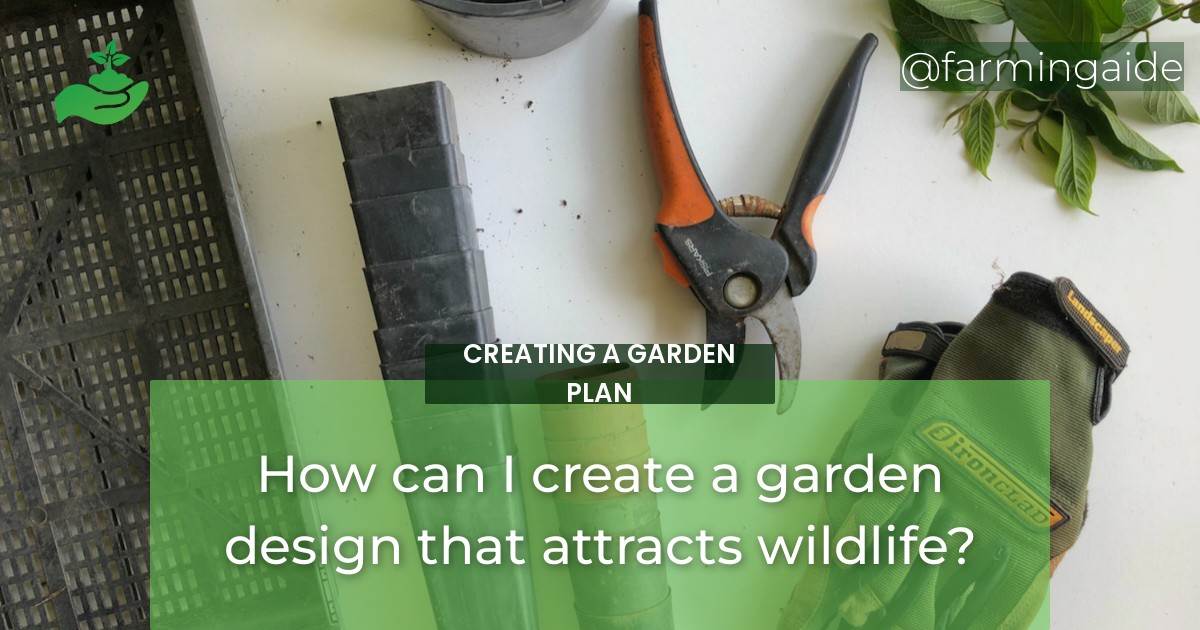Creating a wildlife-friendly garden design is an excellent way to attract birds, butterflies, bees, and other wildlife to your yard. A garden that is designed to provide food, water, and shelter to wildlife will not only support diverse plant and animal species but also add beauty and interest to your landscape. Here are some tips for creating a wildlife-friendly garden design that will help you attract and support wildlife in your backyard.
Can Focal Points in Garden Design Help Attract Wildlife?
Creating garden focal points can definitely help attract wildlife to your outdoor space. By incorporating features such as bird baths, feeders, or specific plants, you can draw in a variety of animals like birds, butterflies, and bees. These focal points can also add visual interest to your garden design.
Tips for Creating a Wildlife-Friendly Garden Design
Incorporating Native Plants
One of the best ways to attract wildlife to your garden is to incorporate native plants into your landscape. Native plants are adapted to local growing conditions and provide food and shelter for wildlife that is adapted to the same conditions. Here are some tips for incorporating native plants into your garden:
Choosing Native Plants
Choose plants that are native to your region and that grow well in your soil and climate. You can find lists of native plants at your local nursery or online. Consider factors like bloom time, color, and texture when selecting plants for your garden to create a diverse and attractive landscape.
Grouping Plants by Sun and Soil Conditions
Group plants with similar sun and soil requirements together to make watering and maintenance easier. This will also create microhabitats that attract different types of wildlife. For example, plants that prefer moist soil will attract frogs and toads, while plants that prefer dry soil will attract butterflies and bees.
Providing Food for Wildlife with Native Plants
Choose plants that provide food for wildlife, such as nectar-rich flowers for butterflies and hummingbirds, berry-producing shrubs for birds, and plants that host caterpillars for butterflies and moths. Avoid planting invasive species that can crowd out native plants and disrupt local ecosystems.
Providing Water Sources
Water is essential for wildlife, especially during hot and dry weather. Here are some ways to provide water sources in your garden:
Adding a Birdbath
A birdbath is an easy way to provide water for birds and other wildlife. Choose a shallow basin with a rough surface that provides traction for birds. Keep the water fresh and clean, and place the birdbath in a shady area to prevent algae growth.
Installing a Pond or Water Feature
A pond or water feature can provide a more significant water source for wildlife and add a beautiful focal point to your garden. Place the pond in a sunny area to attract dragonflies and other insects, and add plants that provide cover and food for wildlife.
Creating a Rain Garden
A rain garden is a shallow depression in your yard that is designed to capture and filter rainwater runoff. It provides a habitat for wetland plants and attracts birds, butterflies, and other wildlife. Choose plants that are adapted to wet soil conditions, and avoid planting invasive species.
Creating Habitat Diversity
A diverse habitat provides a range of food, shelter, and nesting sites for different types of wildlife. Here are some ways to create habitat diversity in your garden:
Adding Layers to Your Garden
Add layers to your garden by planting trees, shrubs, and groundcovers that provide different levels of cover and habitat. This will create a more complex ecosystem that supports a wider range of wildlife.
Incorporating Trees and Shrubs
Trees and shrubs provide food and shelter for wildlife, especially birds. Choose native species that provide berries, nuts, or seeds, and plant them in clusters to create a mini-forest. You can also prune trees and shrubs to create nesting sites and sheltered areas.
Building Nesting Boxes and Houses
You can attract birds and other wildlife to your garden by providing nesting boxes and houses. Research specific species and their nesting requirements before building and placing the boxes, and be sure to clean them regularly to prevent disease.
Providing Shelter and Cover
Provide shelter and cover for wildlife by adding brush piles, rock piles, and log piles to your garden. These structures provide hiding places for small animals and insects and can be used as nesting sites for birds.
Maintaining Your Wildlife-Friendly Garden
Once you have created a wildlife-friendly garden, it’s essential to maintain it properly. Here are some tips for maintaining your garden:
Using Natural Pest Control Methods
Avoid using chemical pesticides and fertilizers, which can harm wildlife and disrupt the ecosystem. Instead, use natural pest control methods, such as introducing beneficial insects, handpicking pests, and using companion planting to deter pests.
Avoiding Chemical Pesticides and Fertilizers
Practicing Sustainable Gardening Techniques
Practice sustainable gardening techniques, such as composting, mulching, and using rainwater harvesting systems. These techniques conserve water, reduce waste, and support healthy soil and plant growth.
Conclusion
Creating a wildlife-friendly garden design is a rewarding way to support local ecosystems and attract a diverse range of wildlife to your backyard. By incorporating native plants, providing water sources, creating habitat diversity, and maintaining your garden sustainably, you can create a beautiful and vibrant landscape that supports wildlife for years to come.
RELATED ARTICLES:


